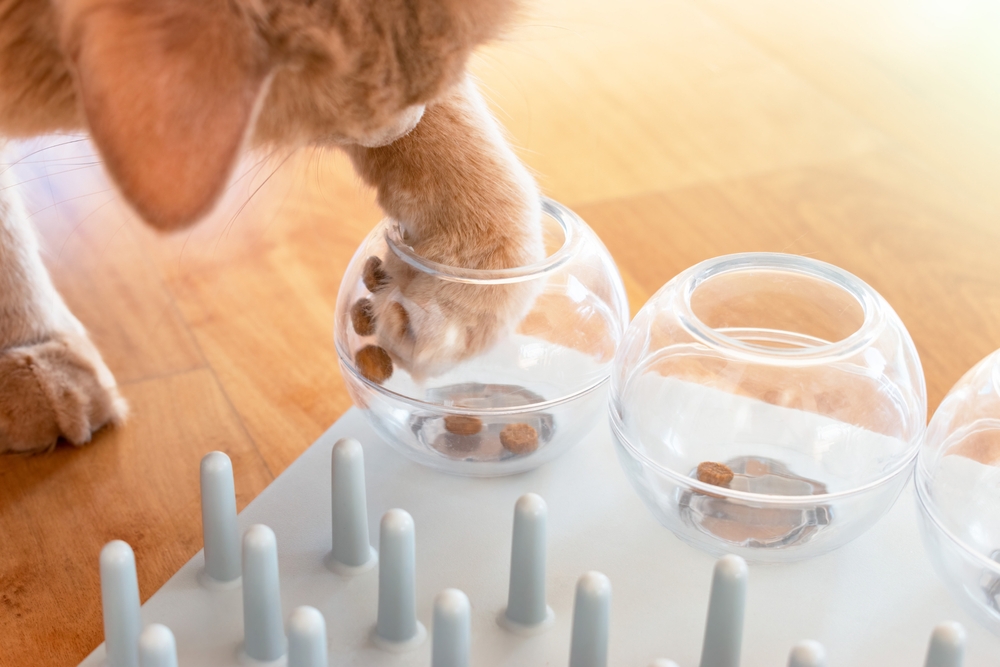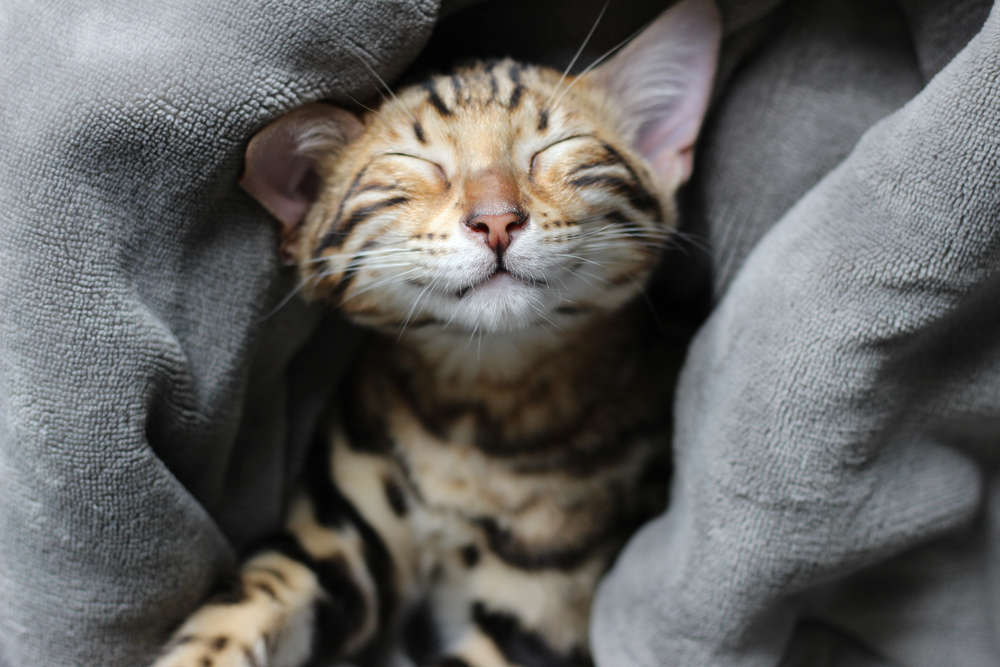The unique and independent nature of most cats makes them a popular pet with many benefits, including being a cozy couch companion. However, it’s a common misconception that feline companions don’t require a lot of effort to keep them happy. Although cats enjoy their alone time, responsible pet owners know there is more to their relationship with their feline companions than a clean litter box and a full food dish. For instance, it may be tempting to allow your cat to roam the great outdoors, but the American Veterinary Medical Association (AVMA) encourages cat owners to keep their companions inside. Outdoor cats have a dramatically reduced lifespan compared to their indoor counterparts and face numerous risks associated with the outdoors, including bacterial or viral infections, toxin exposure, extreme weather, wildlife, injury, and increased risk for parasitic infections. It’s also important to keep your cat indoors to prevent them from stalking your bird feeder because cats are a significant threat to wild bird populations. At the same time, indoor cats need a similar amount of physical and mental enrichment as if they were spending time outside. To help you prevent your cat from having outdoor FOMO (fear of missing out), our Sale Creek Veterinary Services team provides five ways to keep your indoor cat happy.
#1: Provide your cat a safe space to rest and retreat
Cats are naturally territorial, which can be a challenging behavior for them to exhibit when they live indoors. It’s critical to provide your feline companion with a designated space to retreat to so they can exhibit this behavior, which also helps them feel protected. If you have multiple cats, ensure each has their own designated safe space. Most cats will gravitate toward a specific location in your house to rest. Provided that their favorite space is safe, encourage this behavior by placing a soft blanket or cat bed in the location. You also can create a special space by:
- Placing a cat bed or blanket under a bed or in the back of an open closet
- Placing a cardboard box with a soft blanket in a quiet area
- Leaving your cat’s travel crate open so they can use it as a resting spot
- Setting up a cat perch or tree
#2: Bring the outdoors to your indoor cat
The outside world provides much of the stimulation cats require to enhance their senses, including various smells, sights, and sounds. You can bring the outside world to your indoor cat by:
- Placing fresh catnip or treats in different locations around your home to encourage them to explore
- Spraying natural cat pheromones, like Feliway
- Leaving secure screened windows open to allow them to hear natural sounds
- Planting flowers that will attract various bugs outside a perchable window
- Bringing non-toxic flowers, leaves, and plants inside for them to investigate; check the ASPCA toxic plant list first, however
- Building a catio, where they can safely view the outside and breathe fresh air
#3: Encourage your cat’s natural hunting behaviors
Cats are naturally predatory, and you likely have had your fingers or toes pounced upon by your favorite feline. Indoor cats rarely have the opportunity to stalk prey, unless the occasional bug or rodent makes a wrong turn into your home. Encouraging this instinctive behavior will improve your cat’s mental wellbeing, which is critical for their physical health. Provide your cat with interactive toys, such as a feather wand, toy mouse, or puzzle toy, to allow them to mimic their natural hunting and stalking behavior. Engaging in daily playtime sessions also will encourage this behavior and strengthen your bond with your cat. For multiple cats, ensure you provide each cat with individual playtime and attention. Additionally, provide a variety of toys and rotate them to prevent boredom.
#4: Provide your cat a bird’s-eye view
Cats are natural climbers who seek out the highest location in their environment to feel safe, relieve stress, and get a bird’s-eye view of their world. Prevent your cat from becoming unhappy by providing an elevated area, which can include:
- A secure bookshelf or wardrobe with other furniture nearby so they can safely reach or get down from the resting spot
- A tall cat tree or scratching post with a resting platform
- A shelf with a non-slip surface in a cat-accessible location
#5: Get creative with your cat’s exercise

For most cats, marathon napping is their favorite sport. However, exercise is vital to your cat’s health and wellness, and it’s critical to ensure they receive both mental and physical exercise. According to the Association for Pet Obesity Prevention, more than 50% of cats are overweight or obese, and sedentary indoor cats have an increased risk for obesity-associated problems, such asdiabetes and joint issues. Get creative with your cat’s exercise by:
- Placing some of their food in various locations throughout the house to encourage them to hunt
- Playing a game of fetch using their favorite toy, which may be a small ball of crumpled-up paper
- Slowly acclimating your cat to wearing a harness and leash so you can safely take them outside for a walk; however, never force your cat to participate in this or any activity.
Cats are also masters at masking stress and illness signs, and yearly, or more frequent, physical examinations will ensure they remain healthy. Our Sale Creek Veterinary Services team understands that a happy cat leads to a happy home. Call our office if you have questions about keeping your indoor cat happy, or schedule them for an appointment to ensure they are healthy and stress-free.







Leave A Comment